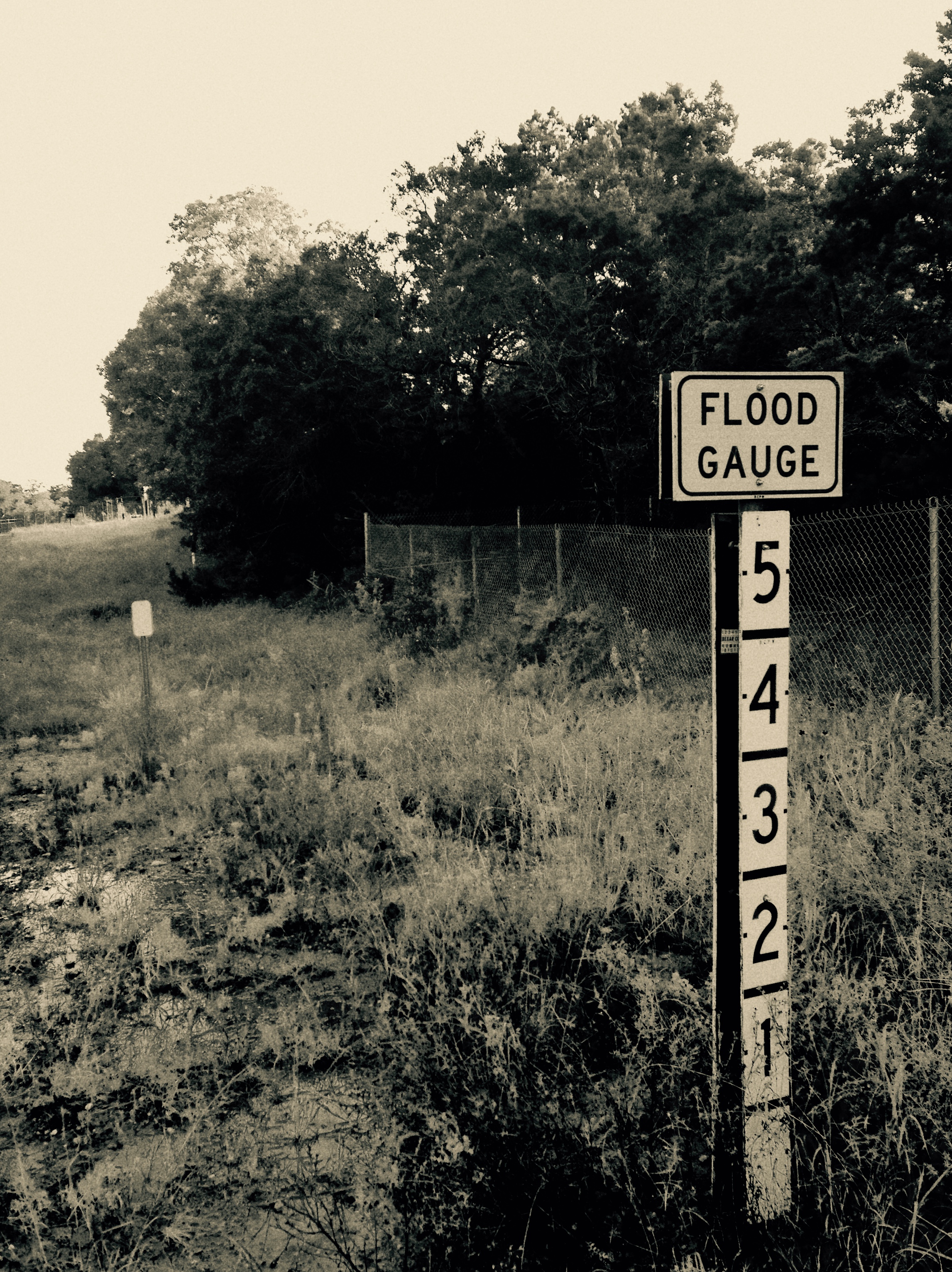SINCE 1948, THE CORRAL THEATRE IN DOWNTOWN WIMBERLEY has been screening Hollywood’s best movies in the open air. “A few changes have been made, but the same gentle breeze off the Blanco River and the legendary starry Wimberley sky makes time travelers of those who spend a night at the Corral,” boasts the iconic theatre’s website.
Wimberley is one of dozens of small towns found on the banks of the larger rivers and smaller creeks that wind through the Texas Hill Country, and remain popular gathering places for those hoping to relax, looking for a place to just slow down.
Perhaps that promise of escape was what drew the McComb family to the sleepy town during Memorial Day Weekend, 2015. According to Jonathan’s father, Joe, the vacation home in Wimberley was a favorite get-away. “They’ve done this over the years, Fourth of July, Memorial Day, go up to the river to roast hot dogs and float in the river. That’s what the plan was,” Joe told Molly Hennessy-Fiske of the LA Times.
On Saturday afternoon the rain started and by early evening the Blanco River started to rapidly swell. In an hour it had risen 26 feet. Laura McComb, visiting from Corpus Christi with her husband Jonathan, their 4 year-old daughter, 6 year-old son and several friends, sent her sister updates on their rapidly deteriorating situation.
“My sister and I had been texting and talking throughout the night and she had told me around 11:00 that water had started coming in,” Julia Shields told KVUE in Austin. Three hours later Julia heard from her sister again. “She called me, she said ‘I’m in a house. I’m floating down the river. Tell mom and dad I love you and pray.'”
——
THE DROUGHT IN TEXAS HAS LASTED FOR MOST OF A DECADE. It’s virtually impossible to visit any corner of the state that hasn’t been negatively impacted in one way or another. For the last few years Lake Travis, the beautiful gem in Southwest Austin, has been at about 35% capacity. Lake Brownwood has been half full. Possum Kingdom, west of Ft. Worth, has been just over 60%. Lake Bridgeport in North Texas has been in the 30’s.
Texas rivers have suffered similarly, particularly the Colorado, which delivers necessary sustenance as it winds its way to the Gulf. From Men’s Journal in July, 2014:
It’s been a long, dry haul in the southeast quadrant of the state. The majority of Texas has been in a record-busting drought for most of a decade, and the last three years have been especially thirsty ones for communities on the Colorado River.
Not to be confused with the other Colorado – which, in wet years, runs from the Rockies to Mexico and irrigates farms and cities in seven states – this one is the largest body of water that begins and ends in a single state. The river and man-made lakes created to store its volume are all in desperate shape. From its source in Dawson County, just south of Lubbock, through its southeast meander to the Gulf of Mexico, you can park your car and walk across streams that once would have swept you to the sea. Drained by demand from boom-town cities in the power corridor of central Texas and by a run of relentless heat that cut its inflow and hiked up rates of evaporation, the Colorado is under existential stress, and much more pain is in the forecast. Every reputable climatologist, including the state appointee, is predicting another decade of recurring drought and steady upticks in heat. That’s hard news for all the many life-forms that drink, swim, and make their living from this river.
——
THE BLANCO RIVER SURGED TO 45 FEET, BREAKING A RECORD SET IN 1929. “They had heard a storm was coming,” McComb told the LA Times. But the house, like others in the area, was elevated on stilts. There had been a flash-flood warning, and officials in the area were alerting residents, but it’s not clear whether the group received any calls or messages. One thing is certain, he said; they thought they were safe. “As evening came, the rain really started coming down good,” McComb said. His son and some of the others went outside to move their cars to higher ground. “They figured if the river came up a couple feet they didn’t want to get their cars in it,” he said.
About 20 minutes later, they looked out a window.
“They got a flashlight and looked out, and all of a sudden the water was up to the top of the pylons, and they realized they were trapped,” McComb said. “They knew they were in trouble.”
——
I WAS IN GALVESTON ON THE EVENING OF THURSDAY, SEPTEMBER 11, 2008. On Friday morning, September 12th, I left Houston for San Antonio as Hurricane Ike churned toward shore in the Gulf of Mexico. The confluence of tragic dates was heavy, and the surreal sight of convoy after convoy of rescue vehicles, buses, police cars and even military vehicles rushing east on Interstate 10 while I, and thousands of others, rushed west was breathtaking. Just like those heroic firefighters in Lower Manhattan seven years before, the brave were charging once again toward the fire. Toward the water.
Hurricane Ike was one of the worst natural disasters in U.S. history, but few outside of South Texas even remember it. Nestled in history between Katrina and Sandy, Ike today is an afterthought. But his damage was real. From Dennis Mersereau at the Washington Post:
Spatially, Ike was a massive storm. As the system neared landfall, Ike’s tropical storm force winds extended an incredible 275 miles away from its eye, and hurricane force winds extended upward of 120 miles from the eye. The immensity of the hurricane was also the main reason it was so damaging. Sustained winds between 80 and 90 mph impacted the densely-populated Galveston and Houston metropolitan areas for a longer period of time than one would normally find in a hurricane, causing additional stress to buildings and vegetation, and ultimately leading to more damage.
Twenty people died along the Gulf Coast as a direct result of Ike’s winds and flooding, and even more died across the central and eastern United States as the storm’s remnants moved through and produced flash flooding. As a result of the Houston-Galveston area’s dense population (it was home to roughly six million people in 2012), human suffering was particularly amplified in areas that were hardest hit by the storm.
No loss of human life is worth even one drop of water. But it would be gross negligence to ignore and forget the direness felt by the state’s decade long drought. At the time approaching hurricanes were greeted with natural trepidation, but also with an almost depraved sense of hope. “If we can just get through the first day unscathed, maybe the rest of the state will get some rain,” we thought. It was as if the coastal cities were Marines, taking on casualties for the greater good.
And the difference with hurricanes is at least there are a few days to prepare for the coming destruction.
——
THE HOUSE DIDN’T HOLD. “All of them were in the room there holding on to pieces of furniture,” hoping to ride it out, Joe McComb told the LA Times. “All of a sudden a big thud came. I don’t know if it was a big tree got uprooted and floated down the river, but it hit the pylons, the stilts, and the house was displaced.
The house began to violently, but miraculously float down the river. The family held hands.
——
TEXAS HAS ITS WATERMEN, AND THEY PURSUE THE RIGHT TO CAPTURE. Though they’ve worn many hats, Clayton Williams and T. Boone Pickens are Texas watermen; Williams in the 1950’s and Pickens much more recently. Much has been written of both, but never has it been speculated that either doesn’t have a “big enough pump.” It’s a masculine play on words but true nonetheless. Those with means have the upper hand in the ongoing water war known as “right to capture.” From the Texas Water site:
Water found below the earth’s surface in the crevices of soil and rocks is called percolating water, or more commonly groundwater. Texas groundwater law is judge-made law, derived from the English common law rule of “absolute ownership.” Groundwater belongs to the owners of the land above it and may be used or sold as private property. Texas courts have adopted, and the legislature has not modified, the common law rule that a landowner has a right to take for use or sale all the water that he can capture from below his land.
Because of the seemingly absolute nature of this right, Texas water law has often been called the “law of the biggest pump.” Texas courts have consistently ruled that a landowner has a right to pump all the water that he can from beneath his land regardless of the effect on wells of adjacent owners. The legal presumption in Texas is that all sources of groundwater are percolating waters as opposed to subterranean rivers. Consequently, the landowner is presumed to own underground water until it is conclusively shown that the the source of supply is a subterranean river.
The water wars in Texas have lasted decades. Water is treated as a commodity, no matter if it’s on the surface or just under it. And whether Mark Twain said it or not, the adage is still true: Whiskey is for drinkin’, water is for fightin’.
Water, or its lack thereof, is a key component in the argument over the state’s major energy plays, and if either are sustainable. Oil fracking has given the state’s economy a dramatic boost, but will the the Eagle Ford Shale and the Permian Basin have enough water to survive, much less succeed? Only time–and the weather–will tell.
——
TRACY TOOK HIS FAMILY TO LAKE MEDINA IN APRIL OF 2006 FOR THE WEEKEND. In the late evening of April, 8th, he left the cabin to take the boat out on the lake. He never returned.
It was three weeks before my cousin was found, early in the morning on April 28th when his body was seen floating near the county park. Medina Lake is 20 minutes from our home but I haven’t visited since he was lost. Water can provide endless entertainment and joy, but is absolutely unforgiving. Painfully unforgiving.
At the time of Tracy’s death Medina was 3% full. After the flooding this May it has risen to 50% full, in a matter of days. Lake Travis is 74%. Lake Brownwood has risen to 91%. Possum Kingdom is 97%. And Lake Bridgeport is now full.
——
THE HOUSE HIT THE BRIDGE. “What happened was the house slammed into a bridge and the house broke in two and they had all been in the house together holding hands but when the house hit the bridge and it separated, he got separated from everyone else,” Laura McComb’s sister Julia told ABC News.
And Joe McComb continued, “He said the force of that water came in and just started taking people in different directions,” He said, ‘I didn’t know if I was paddling up or down, I just thought with one of those strokes, I was going to hit air.’ ”
Twelve miles downstream, Jonathan McComb crawled to safety with a broken sternum, broken rib and collapsed lung, but he was alive. “He saw a light at someone’s house and was able to pull himself up and knock on the door and tell them something before he passed out,” his father said.
The body of Jonathan’s 6 year-old son was found on Wednesday. Two adult females have been found but not yet identified. His 4 year-old daughter is still missing.
Pray for the family, and for all those lost, but say a special prayer for Jonathan. His burden is unimaginable, in part because he lived while others didn’t. The weight will be heavy.
——
IT’S ALMOST AS IF WE DON’T RESPECT THE STORMS. Millions have been spent to alert us to their danger but it’s hard to imagine the water will ever take us. And yet it does. 45 lives have been lost since last Saturday night across Texas, Oklahoma and northern Mexico. Several are missing and hundreds have been rescued across the state during the wettest month ever recorded.
If Texans didn’t invent agency we damn sure perfected it. We own who we are and as a result we sadly become a caricature of ourselves at times. Everything’s bigger and better in Texas, even the way we suffer. Ten years of drought has been erased in a matter of days, forcing us into a painful balance between water’s necessity and the tragedy it can sometimes bring. In times like this water rages through small towns and large metropolises, destroying life, but at the same time, making it possible for life to go on.
Someday the waters will recede. Someday the roaring white caps will end again in trickles. And the fight over who owns it and how we use it will resume.
For now though the hard work of rebuilding is well underway– I’ve seen it in the small towns across the Hill Country. Houston is still flooding, but will be fine. So will East Texas. Dallas and North Texas will clean up and move on. Lubbock and all the tiny West Texas farming towns will make it through, even as the rains continue. There is no other alternative but to mourn for those lost, comfort those still here, and quietly go about the work of rebuilding. Because caricature or not, that’s what Texans do.
——
TONIGHT THE SWOLLEN CREEKS AND RIVERS across the state will continue to rage. In the darkness the noise can be terrifying, the roaring of rapids mixed with intermittent sounds of trees cracking and rocks tumbling. On the surface the noise is deafening but more muted once pulled under; the sounds are muffled but can now be felt. Underneath there is a profound sense of loneliness, even in the most serene settings.
That loneliness is exacerbated when forced. In the darkness, in the churning; the terror, the fear, the sadness is all washed away by Texas water.
If you’d like to help those affected, please visit the American Red Cross or Salvation Army website.









